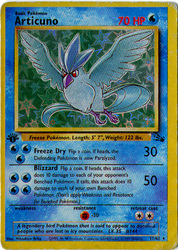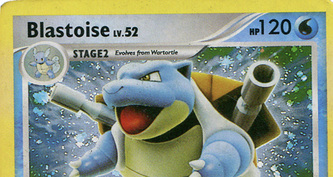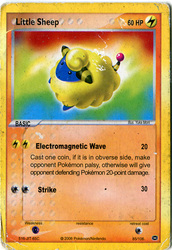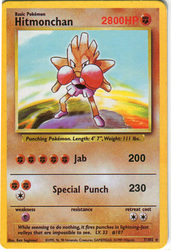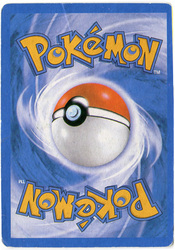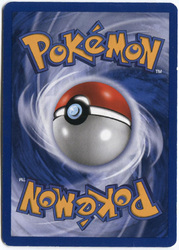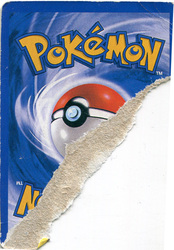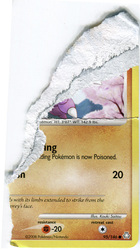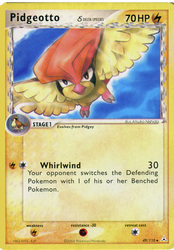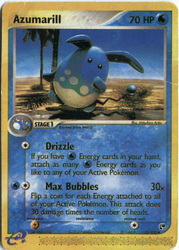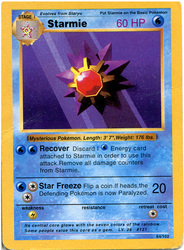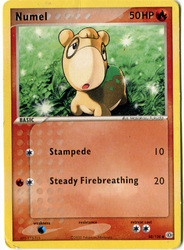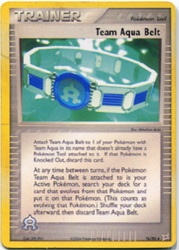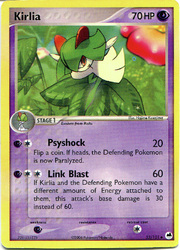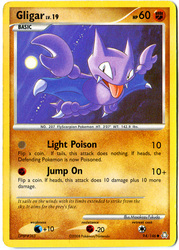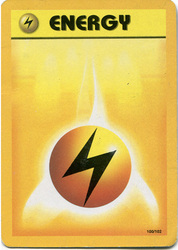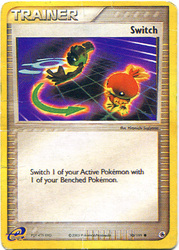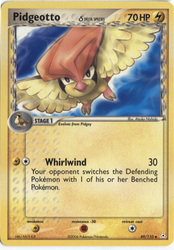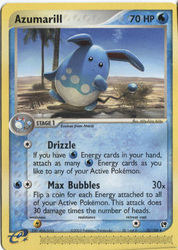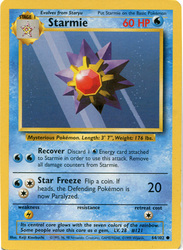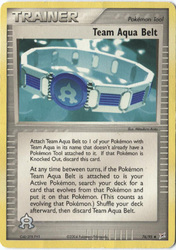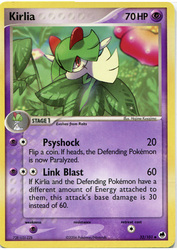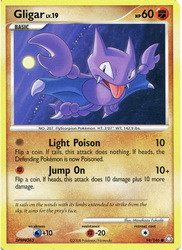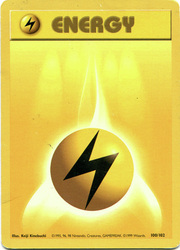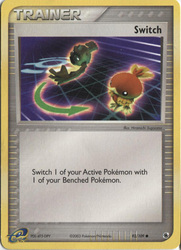Fake Cards
As a Pokémon League Leader, I've come across my fair share of fake cards. They are usually floating around in the collections of the new and younger players we have at league, so I decided to make this page to help people become more aware of the cards they are buying or may have in their collections.
Fake Pokémon cards are unofficial copies of real cards, made to deceive players and collectors into buying the counterfeit product. Fake cards are unlicensed by Nintendo, meaning that profit is taken away from the companies that sell legitimate cards. These are the same companies who send us free league stock and prizes so that everyone who participates in league can have fun!
Fake cards are not allowed to be used in any Pokémon leagues or tournaments. For some people who have been around Pokémon cards for a long time, fake cards can be recognised at a glance. For others, especially new or younger players, it can be harder to identify fake cards from real. Just remember that if you’re ever unsure, you can always ask a Pokémon league leader who will be able to tell you if a card is genuine or not. It’s better to go to the effort to find out than to unknowingly carry around fake cards in your deck or collection!
Here is a list of some of the ways you can tell if a card might be fake. I've also included some pictures of fake cards as examples. Click on the thumbnails to view the larger image. The best way to use this guide is to compare a suspected fake card with a card that you know is definitely real while reading the list.
Feel: Fake cards have different textures to real cards. Some fake cards have a glossier feel and appearance. Some fakes have a bumpy texture.
Patterns: If the card is shiny, the foil patterns are usually different from that of real cards. Some fake cards have patterns like love hearts, rings or squares. Some fakes that are scanned copies of real cards loose their shininess when they are printed, but the circle foil patterns in the background can still be seen.
Fake Pokémon cards are unofficial copies of real cards, made to deceive players and collectors into buying the counterfeit product. Fake cards are unlicensed by Nintendo, meaning that profit is taken away from the companies that sell legitimate cards. These are the same companies who send us free league stock and prizes so that everyone who participates in league can have fun!
Fake cards are not allowed to be used in any Pokémon leagues or tournaments. For some people who have been around Pokémon cards for a long time, fake cards can be recognised at a glance. For others, especially new or younger players, it can be harder to identify fake cards from real. Just remember that if you’re ever unsure, you can always ask a Pokémon league leader who will be able to tell you if a card is genuine or not. It’s better to go to the effort to find out than to unknowingly carry around fake cards in your deck or collection!
Here is a list of some of the ways you can tell if a card might be fake. I've also included some pictures of fake cards as examples. Click on the thumbnails to view the larger image. The best way to use this guide is to compare a suspected fake card with a card that you know is definitely real while reading the list.
Feel: Fake cards have different textures to real cards. Some fake cards have a glossier feel and appearance. Some fakes have a bumpy texture.
Patterns: If the card is shiny, the foil patterns are usually different from that of real cards. Some fake cards have patterns like love hearts, rings or squares. Some fakes that are scanned copies of real cards loose their shininess when they are printed, but the circle foil patterns in the background can still be seen.
On the left, the card has an unusual star pattern in the background. On the right, you can see the circle holofoil pattern, but the card does not shine.
Mistakes: A lot of fake cards are made from scratch, instead of being printed scans of real cards. These cards have many mistakes such as strange names and attacks that don’t make sense. Some of these have attacks, energy costs and HP of a higher value found on any real card (generally if a card has more than 200 HP or if its attack does more than 200, it’s a fake). Sometimes the numbers aren’t rounded to the nearest 10.
Mistakes: A lot of fake cards are made from scratch, instead of being printed scans of real cards. These cards have many mistakes such as strange names and attacks that don’t make sense. Some of these have attacks, energy costs and HP of a higher value found on any real card (generally if a card has more than 200 HP or if its attack does more than 200, it’s a fake). Sometimes the numbers aren’t rounded to the nearest 10.
These two cards were made from scratch. The one on the left doesn't make sense at all, and the one on the right has higher HP than found on any real card.
Text: the text in some fake cards, especially the fine print down the bottom, may be blurry or illegible. The font may also be different to that of real cards.
Text: the text in some fake cards, especially the fine print down the bottom, may be blurry or illegible. The font may also be different to that of real cards.
The picture on the left shows the text of a fake card compared to that of a real one on the right.
Back: the backs of fake cards may seem blurry, washed out or a differing colour to those of real cards.
Back: the backs of fake cards may seem blurry, washed out or a differing colour to those of real cards.
The card on the left is fake, and the one on the right is real. Take note of how washed out the fake looks compared to the real one.
Energy Symbols: The energy symbols in some fake cards are 'bloated' and take up more of the coloured circle they are in. It's important to note however, that some newer sets such as HeartGold & SoulSilver have the same bloated energy symbols, even in the legitimate cards.
Energy Symbols: The energy symbols in some fake cards are 'bloated' and take up more of the coloured circle they are in. It's important to note however, that some newer sets such as HeartGold & SoulSilver have the same bloated energy symbols, even in the legitimate cards.
An example of 'bloated' fake card energy symbols on the left, compared to the real card on the right.
Size: some fake cards are slightly smaller than real cards.
Packaging: When you open a packet of fake cards, they will usually be packaged badly. Some may be back to front or upside-down. Real cards are packaged all facing the same way.
The black line: Real cards all have a layer of black paper in between the two layers of card on either side. Fake cards are usually made with one layer of either white or brown paper or card. You can see the black line from looking closely at the card’s edge. You may also be able to see it if a corner is peeling, or if the card isn’t rare, by ripping it.
Size: some fake cards are slightly smaller than real cards.
Packaging: When you open a packet of fake cards, they will usually be packaged badly. Some may be back to front or upside-down. Real cards are packaged all facing the same way.
The black line: Real cards all have a layer of black paper in between the two layers of card on either side. Fake cards are usually made with one layer of either white or brown paper or card. You can see the black line from looking closely at the card’s edge. You may also be able to see it if a corner is peeling, or if the card isn’t rare, by ripping it.
The picture on the left shows that when a fake card is torn in half, only cardboard is inside. With the real card on the right, the black line is clearly visible.
Place: Fake cards can commonly be found in places like market stalls, $2 shops and the like. Always buy Pokémon cards from places like well-known newsagents and bookshops, big retail stores such as Target and other chain supermarkets/shopping centers, and stores that specialise in cards or games.
If you do find you have fake cards in your possession, the best thing to do is to destroy them. But you could always cut out the pictures or use them to decorate books or card folders! Sometimes league leaders may even exchange your fake cards for real ones. Many people become attached to their fakes and wish to keep them, and that's fine too. As long as you keep them separate from your real cards and you know exactly which ones are which. However I strongly recommend you do not trade, sell or give away fake cards- even if the new owner knows they are are fake. This only allows the cards to circulate through people's collections and somewhere along the line someone will end up with fake cards they don't want.
Fake Vs Real
Here are some fake cards next to their real counterparts. There are many different kinds of fakes, and some are easier to spot than others. Also take note that looking at these scans is different to holding the actual cards; some fake cards are easier to identify from the back or by the feel of the card.
Place: Fake cards can commonly be found in places like market stalls, $2 shops and the like. Always buy Pokémon cards from places like well-known newsagents and bookshops, big retail stores such as Target and other chain supermarkets/shopping centers, and stores that specialise in cards or games.
If you do find you have fake cards in your possession, the best thing to do is to destroy them. But you could always cut out the pictures or use them to decorate books or card folders! Sometimes league leaders may even exchange your fake cards for real ones. Many people become attached to their fakes and wish to keep them, and that's fine too. As long as you keep them separate from your real cards and you know exactly which ones are which. However I strongly recommend you do not trade, sell or give away fake cards- even if the new owner knows they are are fake. This only allows the cards to circulate through people's collections and somewhere along the line someone will end up with fake cards they don't want.
Fake Vs Real
Here are some fake cards next to their real counterparts. There are many different kinds of fakes, and some are easier to spot than others. Also take note that looking at these scans is different to holding the actual cards; some fake cards are easier to identify from the back or by the feel of the card.
